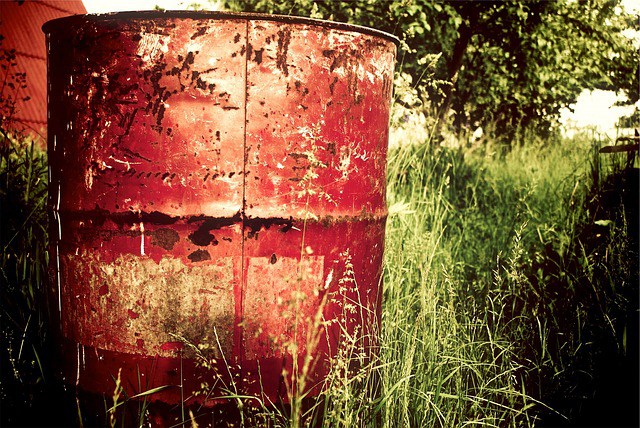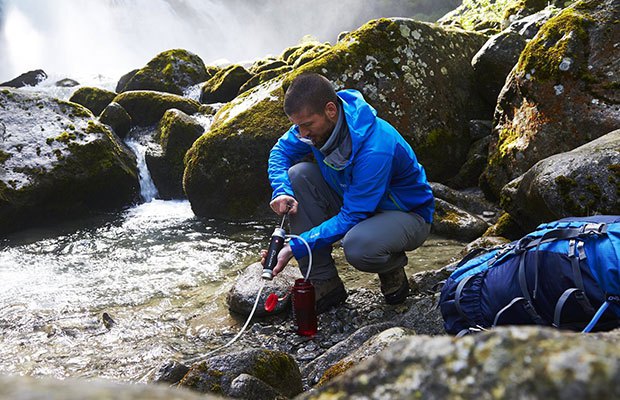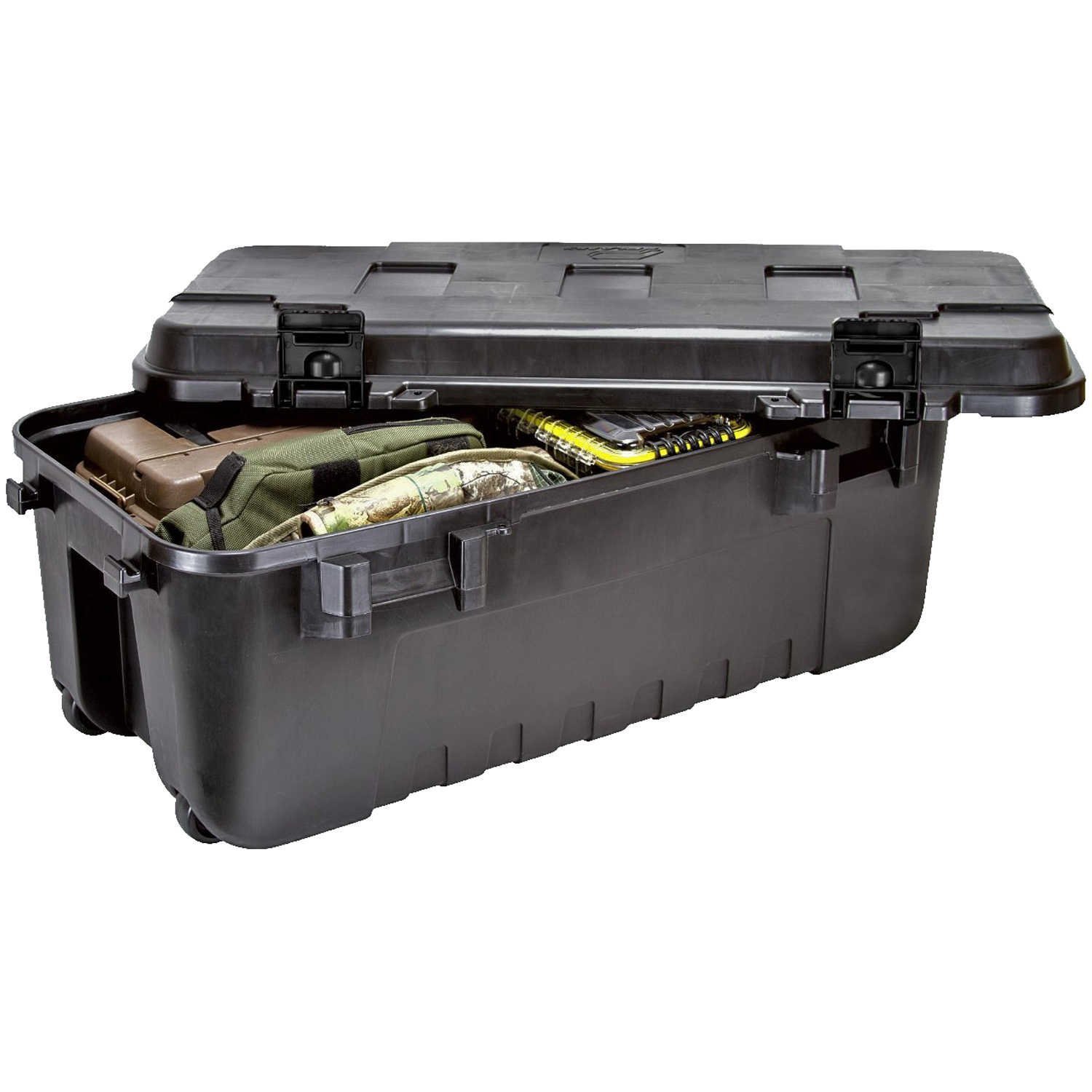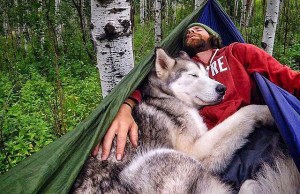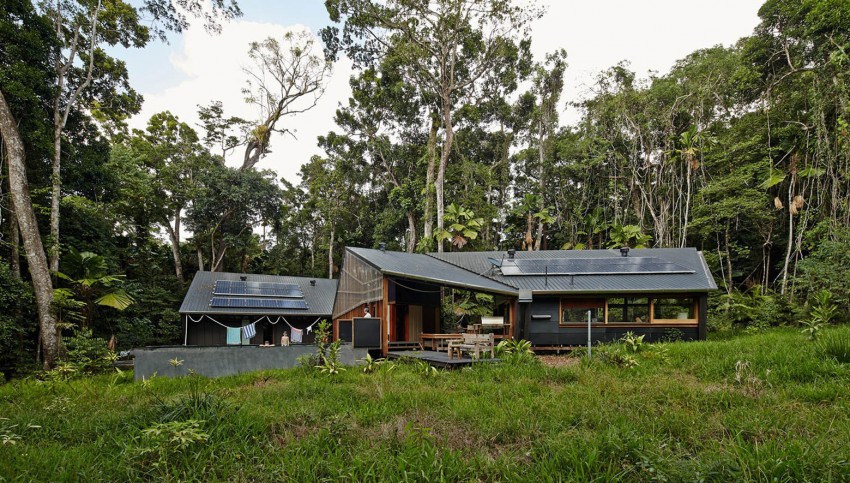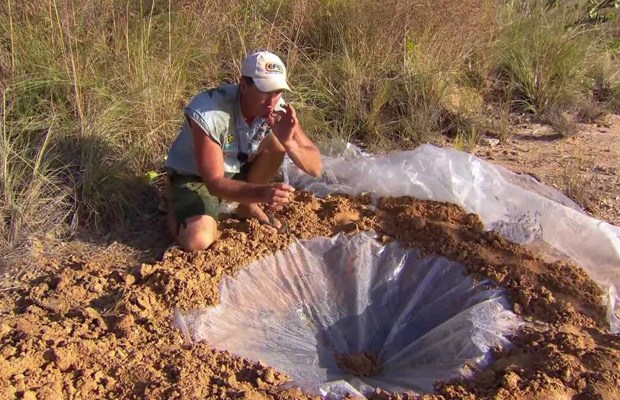3 Tips to Ensure Perpetual Food Supply
The key to survival is preparation, and the consummate prepper is well aware of Sta-Bil, the fuel additive that allows users to store gasoline for a year or more to prevent its highly-refined molecular structure from breaking down and losing octane. The same type of precautions need to be taken to extend the shelf life of food, whether they’re canned or dried.
No matter how much food you stockpile, it will ultimately run out. These three tips will help preserve what you have for as long as possible, and provide renewable sources of food regardless of living conditions.
Low Humidity, Low Temperatures
There are two things that can spoil any food: heat and moisture. Hot, humid environments are ideal for bacteria, yeast, and other microbes to thrive. Autolytic spoilage (i.e. browning of apples, bread mold, etc.) is also hastened by these conditions.
Those living in Midwestern and New England states should store their food stashes in the coolest, driest spot in the house. The basement is ideal, coupled with a dehumidifier. Those who live in states that typically don’t have basements in homes (such as Arizona or Nevada) should pick a room and block out all sunlight. Use roman shades to block out the sun completely, while still allowing the option to open them if needed.
Add oxygen-absorbing packets to dried foods in jars and bags, particularly jerky, cereals, and dehydrated fruits. These packets should also be placed in vitamin and medicine bottles.
Other Self-sufficiency and Preparedness solutions recommended for you:
The Lost Ways (The vital self-sufficiency lessons our great grand-fathers left us)
Survival MD (Knowledge to survive any medical crisis situation)
Backyard Liberty (Liberal’s hidden agenda: more than just your guns…)
Alive After the Fall (Build yourself the only unlimited water source you’ll ever need)
The Lost ways II (4 Important Forgotten Skills used by our Ancestors that can help you in any crisis)
The Patriot Privacy Kit (Secure your privacy in just 10 simple steps)
Other Self-sufficiency and Preparedness solutions recommended for you:
The Lost Ways (The vital self-sufficiency lessons our great grand-fathers left us)
Survival MD (Knowledge to survive any medical crisis situation)
Backyard Liberty (Liberal’s hidden agenda: more than just your guns…)
Alive After the Fall (Build yourself the only unlimited water source you’ll ever need)
The Lost ways II (4 Important Forgotten Skills used by our Ancestors that can help you in any crisis)
The Patriot Privacy Kit (Secure your privacy in just 10 simple steps)
Remember, before eating these plants, use the Universal Edibility Test. Details inside.
10 Must Have Natural Remedies for Preppers
Imagine women giving birth centuries ago or imagine you suffer from some critical injury or serious ailment. Centuries ago, there was not the concept of technology and there certainly weren’t the advances in medical science we have today. Your best option would be to call the tribal medicine doctor or shaman. Someone who knew how to use a leaf as a bandage and how to break and pull a tooth out with a stone. Could you survive? Could you stay healthy? Could you even live long enough to see the next sunrise? Thinking of those types of situations now, it hardly seems possible, but we humans are tenacious and if it was impossible, then how did mankind make it this far? If modern medicines and advances in science are the only reason we are combating serious diseases now, then how did we make it this far?
The answer to this question is simple – Mother Nature has her own secrets. There are many who fear that humans won’t be able to survive without the conveniences of modern medicine. Granted, we won’t be able to save life on the scale that we can now, but there are natural options. Humans made it pretty far along the span of history without any complicated and advanced sciences. For sure there is something much greater reserved in nature. Today we will discuss 10 must-have natural remedies that will offer comfort and healing when the possibility of modern medicine is gone.
Apple Cider Vinegar
Everything from stomach related disorders, to boosting vitality, to counteracting diseases. Taken before supper, it even assists with weight reduction! Likewise, the vinegar is one of those ‘100 uses’ wonder items. The benefits of apple cider vinegar come from its powerful healing compounds, which include acetic acid, potassium, magnesium, probiotics, and enzymes.
Honey

Yes, the gift of God, the food of heaven, honey is one of those natural remedies that you need to have around in your house. The food of God, honey is both good for medicinal purpose and equally serves as a dessert. It includes vitamins, trace enzymes, amino acids, and minerals like calcium, iron, sodium chloride, magnesium, phosphate, and potassium.
Garlic

Consuming garlic on a daily basis (in food or raw) helps to lower cholesterol levels because of the anti-oxidant properties of Allicin. It is also immensely beneficial to regulate blood pressure and blood sugar levels
Coconut Oil

Coconut milk and coconut oil on wooden table
To date, there are over 1,500 studies proving coconut oil to be one of the healthiest foods on the planet. Coconut oil benefits and uses go beyond what most people realize. Research has finally uncovered the secrets to this amazing fruit; namely healthy fats called medium-chain fatty acids (MCFAs), these unique fats include: Caprylic acid, Lauric acid, and Capric acid
Hydrogen Peroxide
A slightly different solution, hydrogen peroxide is good for skincare and nurturing. We’re talking about 35% FOOD grade, which is NOT the same as what you normally purchase. The 35% grade can actually burn your skin if you put too much in one spot. But you can dilute a drop or so depending upon the requirement in a glass of water and you have a prophylaxis or potential cure.
Flax

Chia seeds are viewed as the ideal natural nourishment since they contain an excessive number of advantages to list here. More to it, who might trust that what gives off an impression of being simply one more “weed” with entirely blue blooms would be a characteristic of well-being.
Steam Water – Distilled Water
The most important health benefit distilled water offers is the elimination of waterborne contaminants that may potentially be found in water. Drinking contaminated water is one of the fastest ways to spread disease, toxic metals, and industrial pollutants.
Red Chili

Red chili pepper
Looking for immediate skincare of for some nerve pain relief, the red chili is your spicy go-to product. Beware heavy eating can bring about some serious trouble. Proceed with caution.
Bergamot

Bergamot is also a good source of vitamins and is said to have super anti-oxidant and other unique properties that enhance well-being and promote anti-aging. Exemplified by all the dancing and bike riding you see 100-year-old Italians doing.
Aloe Vera
This is viewed as an attempted and demonstrated must have mending plant that as a rule is related to skin medicines, particularly consumes, yet it is much more flexible than simply that. Make ointments and medicine from a mix of coconut oil, aloe, and nectar for astounding skin revival properties.
In her work entitled The Forgotten Power of Plants, Dr. Nicole Apelian describes in more than 300-pages the most powerful medicinal plants and step-by-step instructions on how to turn them into powerful remedies.
Check out the off-grid recipe section that will give you the best natural alternatives to every pill in your medicine cabinet.
Imagine women giving birth centuries ago or imagine you suffer from some critical injury or serious ailment. Centuries ago, there was not the concept of technology and there certainly weren’t
Trash Cans – Survival Uses for Preppers
We buy a lot of things to prepare for the unexpected…or expected, that SHTF will be at our doorstep one day. For some, this is further in time, for others comes every day with floods, hurricanes, bad weather conditions and much more.
You may have in mind items for when the SHTF like duct tape, canned food, survival knives, but there is one item you might consider including in your prepper list: the trash can.
Why Trash Cans?
You already use trash cans. They are everywhere (inside and outside) which make them easy to access in an emergency. Trash cans are a heavy-duty item; they stand up to frequent use and they’re durable as hell. Even indoor cans, like those you’d use in an office, have potential uses you probably haven’t considered.
Here are just a few ways you can use trash cans when the grid goes down.
1: Collect Rain Water in Trash Cans
In an emergency, a trash can may be your best bet if you are running out of stored water. You can turn your trash bin, perhaps used to store other prepping supplies up to that point, into a rain barrel. This project requires two holes cut at the top and bottom for the downspout and faucet, PVC piping to construct a downspout, gasket fittings, and tubing for the faucet. Fittings may be secured with washers and sealed with silicone caulking.
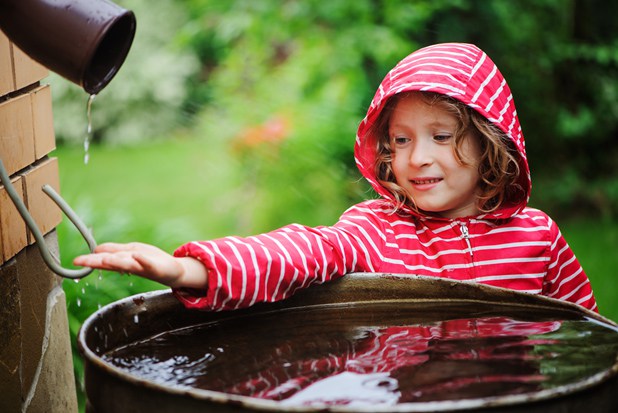
My recycling bin is going into action immediately as a rain barrel if the grid goes down. After a thorough cleaning of course.
Keep all needed items with a compass saw for cutting the holes without a power drill and rain barrel-making instructions in a Ziploc bag near your trash can. Rainwater should always be treated before consumption, so figure out ahead of time if you are going to use chlorine, filters, or boiling methods to purify your drinking water.
2: Make a Super-Sized Rocket Stove
Converting a large metal trash can into a rocket stove is fairly straightforward. Cut a hole at the bottom of the trash can to accommodate a stovepipe made of 6” elbow piping; the stovepipe will need to be constructed as a double-walled chimney with a trim ring and an extra section of piping. The stovepipe will fit into the hole cut toward the bottom with its top trimmed below the top of the garbage can. The pipe should be secured with dowels and nuts arranged in a wagon wheel pattern to stabilize it. The pipe is then insulated with vermiculite poured between it and the sides of the trash can.
You will need to lay a grate across the top for a cooking surface. Load the bottom of the stovepipe with wood and light. Now you’re ready to boil water and cook food on a stove so efficient it requires very little wood to produce the necessary amount of heat.
3: Dispose of Human Waste
A smaller trashcan can work as a makeshift toilet. This is a simple solution in situations where human waste needs to be carried away for disposal. Line your trashcan with a double layer of garbage bags. Place a couple of 2x4s over the rim to create a seat. Waste can then be carried away and the trash bags replaced as needed.
4: Grow Food
Trash cans can be great tools for growing plants. A favorite trick of home gardeners everywhere: using a trash can to grow potatoes. Potatoes require large amounts of earth heaped on top of growing plants, and a large trash can (think 20 to 32 gallons) is a great way to keep soil in place as the potato plants grow upward. Either drill holes in the bottom for drainage or just cut the entire bottom off of a plastic trash can.
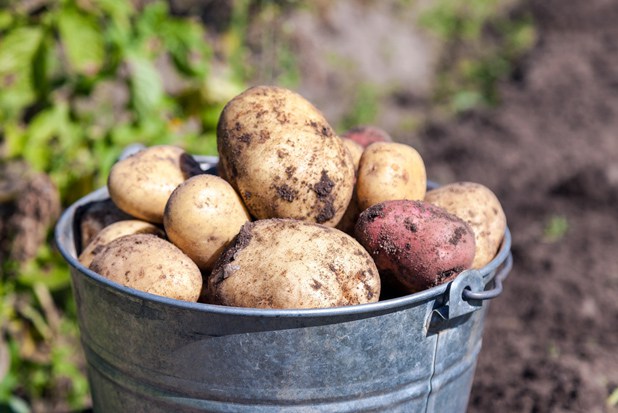
Potatoes don’t have to grow in the ground. You can use an old trash can to create a potato growing container
Start the potatoes in about 10 inches of soil and add more for every 10 inches or so of growth. The best part is the trash can is easily cleaned and used for a new crop as soon as the first is harvested.
5: Shovel Snow
That small trashcan in your bathroom or office can become a snow shovel. Shoveling with a small can certainly won’t be easy on your back, but a trash can may also work to move soil and sand. Just make sure the can is sturdy enough to hold up under the weight of snow before you start using it to dig yourself out.
6: Faraday Cage
A Faraday Cage is essential for keeping your small electronics safe from an EMP (electromagnetic pulse), and you can make one using a steel trash can. Wrap each item in cloth, then wrap in three layers of foil. Place the item in a box and wrap the box in two layers of foil. Store off the ground once wrapped.
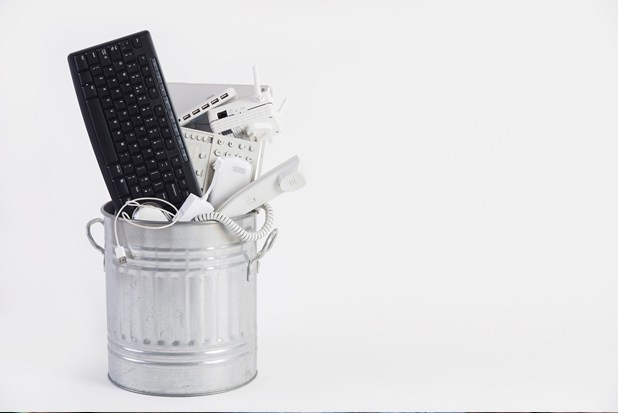
Trash cans can be used for simple Faraday cages.
Completely line your trash can with cardboard and seal with its tight-fitting lid. For this protective system to work there needs to be a clear separation between both the layers of foil and between the foil and the trash can metal. Steel trash cans are sold in a variety of sizes, so you can select the one that works best with the number of electronics you are trying to keep safe.
7: Hold Emergency Supplies
Trash cans make useful storage containers for prepping supplies. They come in a variety of sizes with all kinds of lids and handles. You can even select cans in different colors to better organize your supplies. Larger trash cans may be used to store emergency supplies for a whole family– just throw it into the bed of your truck for hauling supplies the moment you need to. Then you can repurpose the trash can for any of the above ideas.
Think Creatively, Be Prepared
A trash can is useful for much more than holding garbage – it can be an integral part of how you collect water, cook food, dispose of waste, grow food, or protect your electronics. Of course, these are just a few of the ways your common trash can fits into survival plans:
We buy a lot of things to prepare for the unexpected…or expected, that SHTF will be at our doorstep one day. For some, this is further in time, for others
Bug Out Bag Water Filtration Options
A critical prep that you have to plan for including in your bug out bag is water. When I first got into prepping, I had people saying that they would carry all of the water they needed in their bug out bags. If you figure 3 gallons (1 gallon per person per day), that would simply not be wise or possible for most people for very long. Then I started seeing people say they would pack 3 liters of water. That’s better, but 3 big plastic bottles is almost 7 pounds, not to mention you must have space for them. Not the end of the world, but not insignificant either.
One of the ideas I try to promote is to watch the weight on your bug out bags and not overload them. I recommend this for a lot of really simple reasons. If your Bug Out Bag is too heavy, it will hurt eventually. It might not hurt when you first take off walking, but it will eventually. In addition to rubbing you raw and potentially causing injury, you will be more off-balance and less able to quickly move. If you can’t move out of danger quickly enough, that bug out bag could get you killed. The better idea is to pack your bug out bag in a way that is as light as possible while still maintaining the essentials you need to survive for up to 72 hours. Don’t go minimalistic for the sake of making the scales proud, but you should look carefully at the overall weight.
Water, Food and ammo, possibly a tent are all great places to shed pounds from your bug out bag and today we are focusing on water. I have personally tried a few different water filtration methods and wanted to highlight the pluses and minuses for you today on Final Prepper as I see them. Hopefully this information you will make sure the bug out bag water filtration options you choose will work well for you if you ever need to use them.
In addition to being less heavy than simply carrying your water on you at all times, these bug out bag water filtration options will give you increased range and capabilities. Instead of being limited to only the water you are able to carry, it is easy to filter an extra liter or more from sources along your route. All the while, ensuring that the water you are drinking isn’t going to make you sick.
MSR MiniWorks EX Water Filter
This first filter I tested is one I have owned for years and up until recently used on my backpacking trips. The MSR MiniWorks EX is a great water filter that is activated by a manual pump. You simply connect the hose, stick that into the water and screw your Nalgene bottle or dromedary bag onto the bottom of the filter and start pumping. In just a few minutes the water from your source will be pressed through the filtration system and with a little time, you will have a full bottle of clean water to drink. Filtering a standard Nalgene bottle like below probably took 3-4 minutes.
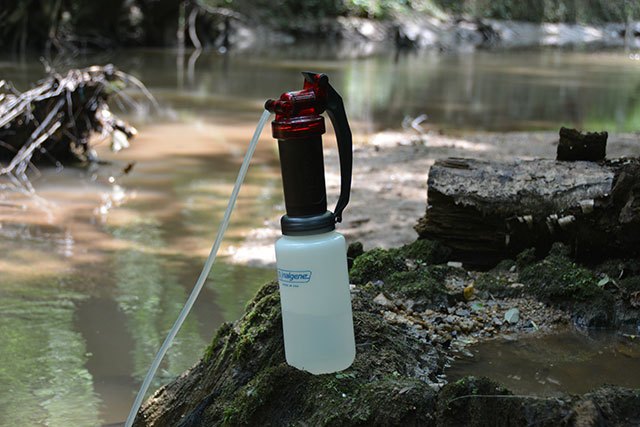
The MSR MiniWorks EX was my first backpacking water filtration. We loved it when we had to depend on it in the woods.
I would take these down to the river and fill up everyone’s water bottle as well as two 48 ounce bladders we had when we stopped. The bladders were to refill bottles and went toward coffee and reconstituting our freeze-dried food.
So, good and bad about this filter. First off, I like the fact that this is pretty simple to use and you don’t have to get down into the water to collect anything. The water tastes great and the pump has stood the test of time for the most part. I did have one pump stop working on my wife when we were on a backpacking trip. Fortunately, I had two filters so we had some redundancy built-in. Pumping does take you a little while and the pump isn’t the lightest or cheapest option. Once you return from your trip you need to clean the filter element, usually with a scrubbing pad to get the gunk off of it and let everything dry completely for a few days before you put it away.
MSR MiniWorks Features
- Ceramic/carbon Marathon™ EX element effectively removes bacteria and protozoa including giardia and cryptosporidia
- Also removes unpleasant tastes and odors caused by organic compounds, such as iodine, chlorine and pesticides
- Filter can be cleaned over and over for maximum field life with no tools required
- Bottom screws onto an MSR Dromedary® Bag or Nalgene® water bottle for easy operation (both sold separately)
- Easy dis-assembly lets you troubleshoot and maintain the MSR MiniWorks EX filter in the field
Weight: 14.6 ounces
Cost: $84 on Amazon.com
I also found this excellent review of the MSR MiniWorks EX from Black Owl Outdoors for those who like to watch videos.
Sawyer Mini
When I first tried out the Sawyer Mini I thought this was the best invention in the world at least from the standpoint of water filtration options for preppers. The filter was extremely lightweight, compact and could filter hundreds of thousands of gallons. The Sawyer Mini could be used as a straw to drink from a water bottle like the life straw or from the included squeeze bag that comes with it.
The cost, low-weight and ability to filter so much water is an incredible advantage, but using either the squeeze bag or a standard water bottle has some drawbacks in my opinion. You are still only filtering on demand unless you squeeze the water into another container and that isn’t always the most practical. One of the reasons I don’t think the LifeStraw is the best option for me in all cases.
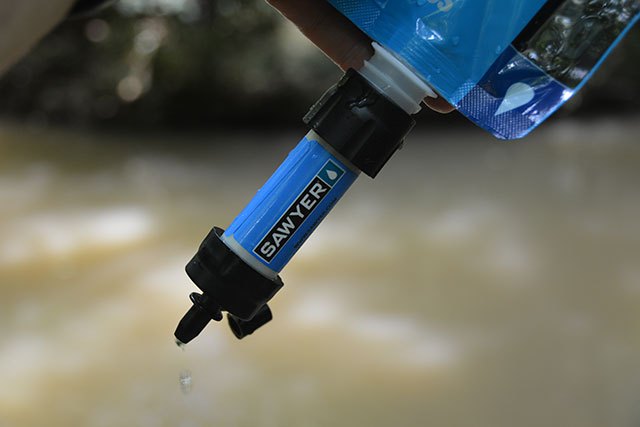
You can use the included squeeze bag to collect water and the Sawyer will make it safe to drink.
Sawyer Mini Features
- Hollow-fiber membrane offers a high flow rate; sip on the Mini like a straw and it filters the water while it’s on the way to your mouth
- Filter will also fit the threads on the included Sawyer 16 fl. oz. reusable pouch that you can fill at a lake or stream and then use to squeeze water through the filter
- 0.1-micron filter physically removes 99.99999% of all bacteria, such as salmonella, cholera and E.coli; removes 99.9999% of all protozoa, such as giardia and cryptosporidium
- Filter will also fit the threads on most bottles of water that you buy at a grocery store; can also be used as an inline filter (adapters and hoses not included)
Weight: 2 ounces
Cost: $20 on Amazon.com
I also found this review for perspective from Preparedmind 101
Polar Pure – Crystal Iodine Water Treatment
The third option I tried is Polar Pure. Polar Pure is a Crystal Iodine water treatment, not a filter. The bottle holds actual iodine crystals you might be able to see in the photo below. The process is for you to fill the bottle with water and let this sit for 1 hour. At the end of an hour you have something like concentrated iodine brine that you can use make almost any water safe to drink. There are simple to follow instructions on the bottle and even a hand-dandy gauge to tell you how many capfuls of the solution your water will need to be safe. The number depends upon the temperature of the water.
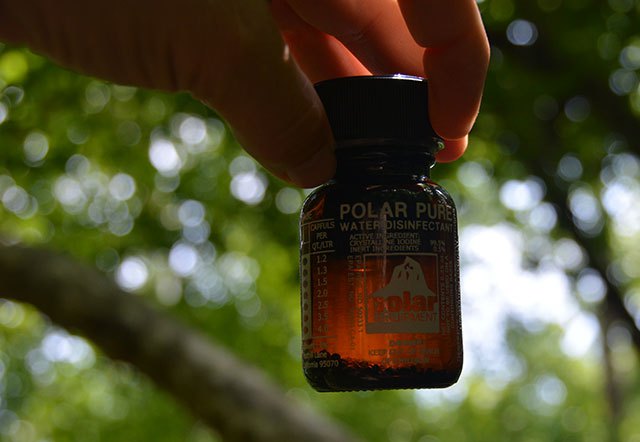
Polar Pure uses iodine crystals to disinfect water.
You pour the recommended capfuls into your 1 liter water bottle and let it stand for 20 minutes before drinking. When you are done, just fill the bottle up with water again and it will be ready for your next treatment in another hour. This relatively small bottle will last for up to 2,000 liters of water, although I don’t know who would count them. When the iodine crystals are gone, so is your ability to use this to make your water safe.
Iodine, unlike the micron water filters above can kill viruses. Giardia, mentioned above is caught by the water filters, but if you have something like hepatitis or polio in the water, the simple filtration method above won’t work. Now, the question becomes, do you have to worry about viruses in the water you are drinking or just organisms that can make you violently ill?
The Polar Pure bottle is one that I would carry with me as an extreme back up for highly questionable water. The science is good on making your water safe. Iodine has been used for a very long time, but the bottle is glass. You could be in trouble if this is all you have and it is broken. Additionally, iodine will make your water safe, but it won’t filter it out so if you pour yourself a big cup of slightly brown pond water and treat it with iodine, it will be perfectly safe for drinking – brown pond water. Filtering your water first through a handkerchief or something like coffee filters at a minimum would be better. Some people use Polar Pure plus another filter for the ultimate in safe water.
Weight: 5 ounces
Cost: $20 on Amazon.com
For those who want to see the polar pure in action, there is a good video from Provident-Living-Today.com
Platypus 2L GravityWorks Filter
The last item I tried out for my bug out bag water filtration decision process was a relatively new purchase. I had heard about the Platypus GravityWorks Filter system from one of the readers on Final Prepper when I was initially looking at the Sawyer answer to the same functionality. The Platypus was almost half the price so I decided to give this a try because it looked like the perfect solution to me.
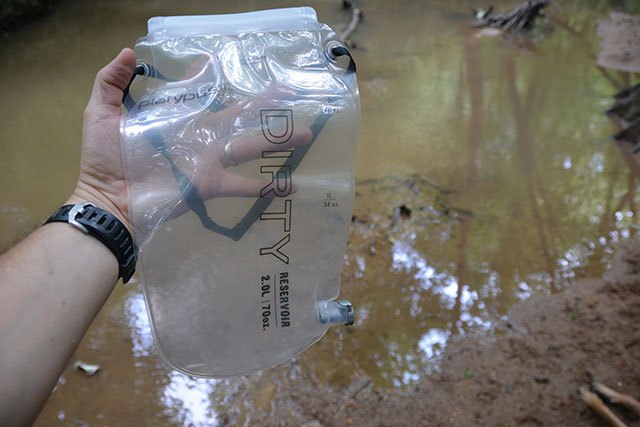
Keeping the bags separated is easy with clear labels.
The Platypus 2L GravityWorks Filter is a two bag system. You have one bag for water collection and it is very simply labeled “Dirty”. Your dirty water goes in here and it has a wide opening at the top which works very similar to a zip loc bag. This wide opening allowed me to collect 2 liters of water from the creek very quickly and easily. You can see my test water isn’t a crystal clear glacier spring so the bag’s label was very appropriate.
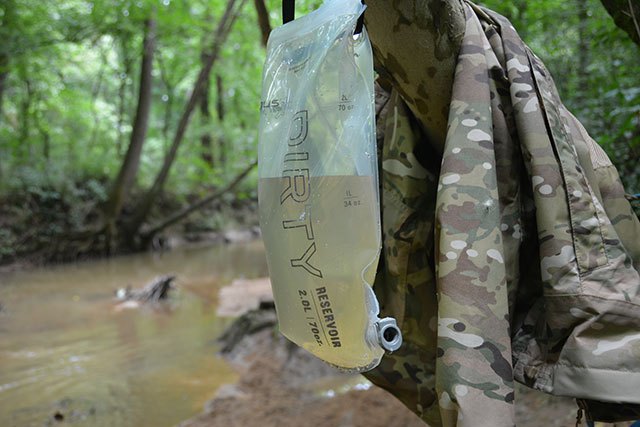
The Platypus Bag system has a simple attachment system to hang your bag of water to be treated up on a tree, bumper or anything higher than the clean bag. Gravity does all the hard work.
Another nice feature were the connectors. The Platypus GravityWorks has a quick connect so you can collect your dirty water and either pack it out for filtration later or carry it back to camp. The filter element snaps in and you are ready to filter.
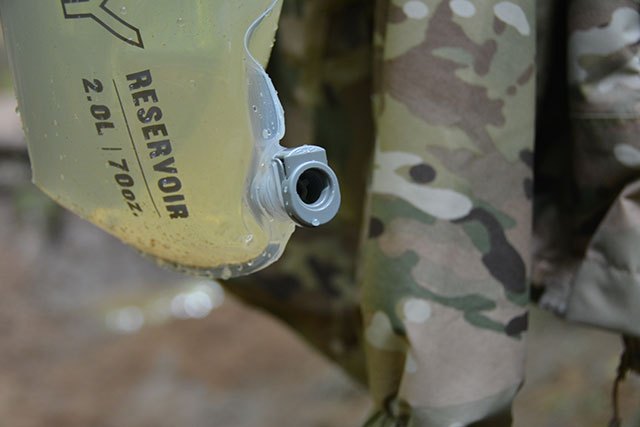
The Platypus filter element snaps into the reservoir quick connect and you are all set to filter water.
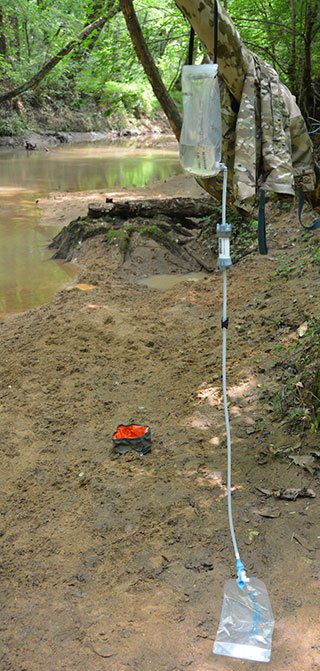
This system is fast. I only filled up about 1 liter but it was filtered in less than 2 minutes.
Once the filter is snapped in, the water will flow almost immediately. The tube running from the filter has a stopper that you can use to quickly pinch off the flow while you hook up the clean bag. As long as the bag of dirty water is higher than the clean bag, the appropriately named GravityWorks filter will take care of all your heavy lifting while beautiful clean water flows into your empty bladder.
This system will hold 2 liters of water which I think gives you a lot of water for the average person. You can also just filter two liters, then collect two more liters of dirty water for later. You will be carrying four liters of water with you at all times. Two filtered and two that needs to be filtered.
Cleaning this system is as simple as lifting the clean water bag up over the dirty water bag and squeezing your clean water bag. You will see the dirty sediment flow back into the dirty bag and you know your filter is clean when that stops.
Platypus GravityWorks Filter Specs
- Easy, Pump-free filtering
- Fast! 1.5-liters per minute
- Weighs as little as 7.2 oz. (203 g)
- Ultra-Compact
- Meets all EPA & NSF guidelines for the removal of Bacteria and Protozoa, including Giardia, Cryptosporidium, E. coli, Salmonella and Cholera
Weight: 7 ounces
Cost: $79 on Amazon.com
And I found this review from Outdoor Gear Lab that shows the larger 4 Liter system.
So What is the best bug out water filtration system?
This question isn’t something I can answer with a definitive statement that will stand for all time or in all situations, but I will share some of my thoughts. My idea of bugging out involves living possibly for some time in forested terrain. I plan to be on the move and I don’t want to slow down more than I have to for rest. Water is crucial for life so I don’t want to have to go to more trouble than is prudent to acquire it. Additionally, if I am strapping a pack on my back and walking out the door, I have to plan for being on my own so to speak for potentially much longer than 72 hours.
I have considered both caplets like the Portable Aqua Water Filter tablets and I even own some of them, but they last for a finite amount of time. The standard bottles will give you I think 25 quarts of water. With a hike for three days in the summer, enough for food and your bottle will quickly be cleaned out. It will go faster if you are sharing.
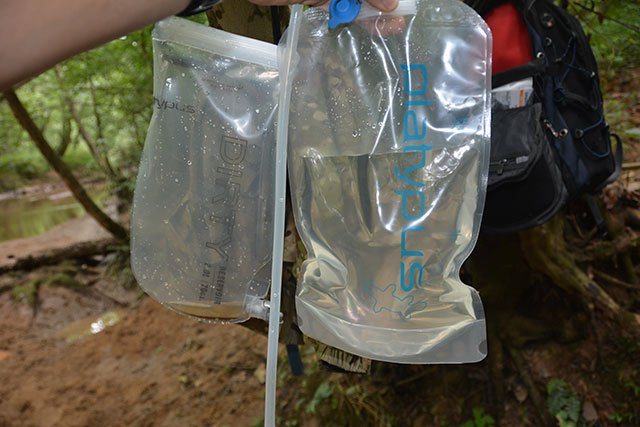
I had all of this clean, fresh tasting water in a little less than two minutes.
The LifeStraw product is one I just don’t think is practical. It is a great idea, don’t get me wrong, but I for one don’t want to be forced to stick my head in a puddle just to get a drink. I want to take giant gulps of water if I am thirsty and I want to be able to take water along with me. Sure you can fill up empty bottles and drink out of them with a LifeStraw, but I think there is a better option.
The MSR Filter pump has usually been a great filter, but because it is mechanical, I have had one give me troubles. I was able to repair it eventually, but that wasn’t a good sign. I should have back-ups anyway I know, but I would rather go with a more stable platform and the MSR is heavier than all of the other options I have tested.
What about boiling water? Sure you could do that, but you have to build a fire first and then boil your water, then let it cool down. Do you want to do all of that in the heat of summer? Even in winter, that fire might be nice, but to go through all that effort for drinking water seems like a fall back plan, not the first option.
Iodine crystals like Polar Pure seem to be the best option for killing viruses, but like I said, their bottle is glass. One slip out of your hands onto a rock will end your water filtration options for that bug out trip. Even if you don’t drop it, I prefer to drink water as soon as possible and wouldn’t want to remember to keep my iodine warm for effectiveness. I think Polar Pure makes sense as a back up, but not the sole method of water filtration in a bug out scenario. For Backpacking trips Polar pure is a great idea. If you have the time to leisurely prepare your water, I think this is a good option.
The Sawyer as it is would probably be my second choice because of the weight and size. I would have to fill a large reservoir, something like the 48 ounce Naglene Bladders and rig up some way to squeeze filter a larger amount of water into my bottles. Not the best, but it is incredibly light and could get the job done.
What about items like the SteriPEN that use UV light to make water safe to drink? What about EMP? What if it breaks? What if you run out of batteries?
I think that for me the GravityWorks system from Platypus is the easiest and fastest way to collect water that will be clean and fresh tasting. With it’s fast flow rate, I can grab a 2 liter bag of water, hook up the filter and throw them both in my bag if needed and keep on going to a safe location. This seems to offer the most capacity with the fastest filtration time and easiest system to learn and remember. I can teach my kids how to use this in about 2 minutes which is about the same amount of time it takes to produce 2 liters of clean water.
That is my take on the best bug out water filtration options. What do you use?
A critical prep that you have to plan for including in your bug out bag is water. When I first got into prepping, I had people saying that they would
Bug Out Vehicle Load Plan
In the face of disaster, preppers know we need to move quickly. We should be prepared to act in a minute’s notice when we realize our family is in jeopardy. We each have our Bug Out Bags ready to go or they should be but it is a different matter altogether if the family bug out mobile is involved. How many times have you watched a Prepper show where the family simulated loading all of their gear to escape town? Often it took them much longer than they anticipated and in at least one case, they couldn’t even take their main prep with them.
We have talked about conducting a trial load of your bug out vehicle before and that makes perfect sense, but what if you had a simple way to plan and stage your bug out vehicle equipment, food and gear that would only take you 10 to 20 minutes to load, was ready to go when you needed it and would give you just about everything you would need to live on your own for at least 30 days? What if this simple bug out vehicle load plan could get your and your family on the road faster? Do you think it would be worth it to spend a little time now as opposed to wasting life-saving hours later?
What do you need to pack if you are running away from disaster?
The idea for the bug out vehicle load plan comes from a couple of places. First, like so many of you, I have tried to figure out and plan for all my supplies if the situation dictated that I needed to throw everyone in the car and leave. I have written about my plan to shelter in place because I think everything being equal, it is much easier to weather some disasters from the comfort of your own home. However, I do realize that I don’t always get a vote. Perhaps a chemical spill 5 miles away was causing illness and evacuations. I would need to go and quickly.
I have many prepping supplies that I think are vital to living and surviving away from my home, but I don’t have them all packed and ready to go. I have some items in closets, some in sheds, some under beds, in spare closets and others strewn in numerous drawers. If I have plenty of time, I think What I have collected so far can cover a lot of bases, but in this scenario, we want to get out quickly. It could be that you want to beat the rush that could quickly cause the highways to be parking lots. It may also be that if you don’t get to safer ground, you will die.
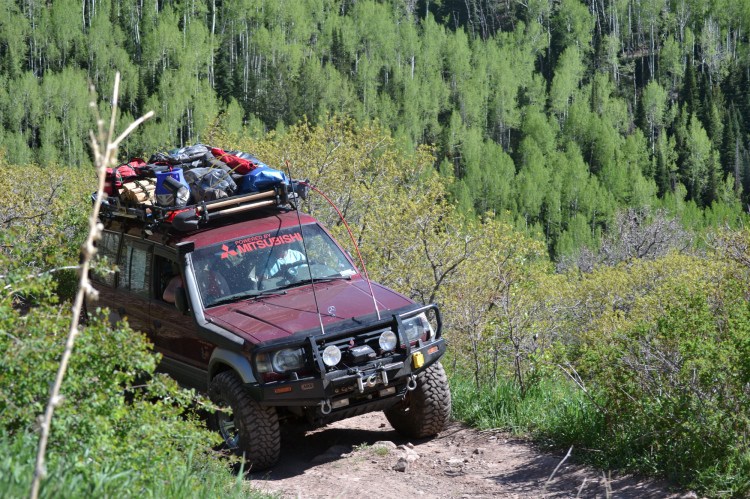
Roof racks greatly extend your cargo carrying capacity.
The list I have put together draws a lot of inspiration from camping trips. I do still maintain that in many aspects, living off the grid is very similar to camping. Yes, there are many ‘but what about’ to that analogy, but if you have the basics to live in the woods for a week without starving, you are in pretty good shape. Will that last years? Will that keep you safe from hordes of Mongolians on horses? No, but we are working towards a goal here. Not everyone is able to have a bug out retreat.
What do you need to survive?
The consistent part of prepping is that everyone needs the same core things to survive. You need water, food, shelter and security. Technically you don’t need security if you are on an island and no creatures or humans are trying to separate you from your head, but you get the idea. In this world, you will likely need to defend yourself from others, in some situations, at some point.
So our packing list is broken down into storage cases that represent some of these crucial elements. My plan is to have weather proof cases packed with all of these supplies ready to go at all times. If I need to go, it is a pretty simple matter to load them on my vehicle, secure them and roll out of the neighborhood.
The cases I use are from Plano. They are called the Sportsman Trunk 1919. The case dimensions are 37.75″ X 18.25″ X 14″ and I have room for three of these on the top of my vehicle plus more actually. I have more room inside the vehicle too, but I will get to that later.
Case 1 – Food
I think what goes in your food case will vary greatly. What I am comfortable eating would make some of you wince with pain. You have to consider the weight, storage space and caloric benefit of what you do pack though. For example, if you fill your food case up with nothing but bags of rice and cans of beans, that will last a while, but will quickly become boring. How sad is it when nobody wants to eat your food to survive? ‘They’ll eat when they get hungry enough!’ I know, I have said that too, but we should be able to agree a little variety is better.
Hopefully, we all know that nothing refrigerated should be going in this case and I would even argue against a cooler too. You should be packing food that you can forget about and only bring out when you need to leave. Coolers are big wastes of space.
What kind of food? I have several boxes of freeze dried food from a few different vendors. With choices like chicken noodle soup, mashed potatoes, powdered milk, chocolate pudding, rice, fruit, mac & cheese, etc. there is bound to be something we can all enjoy. Plus, the freeze dried food takes up so much less space than cans.
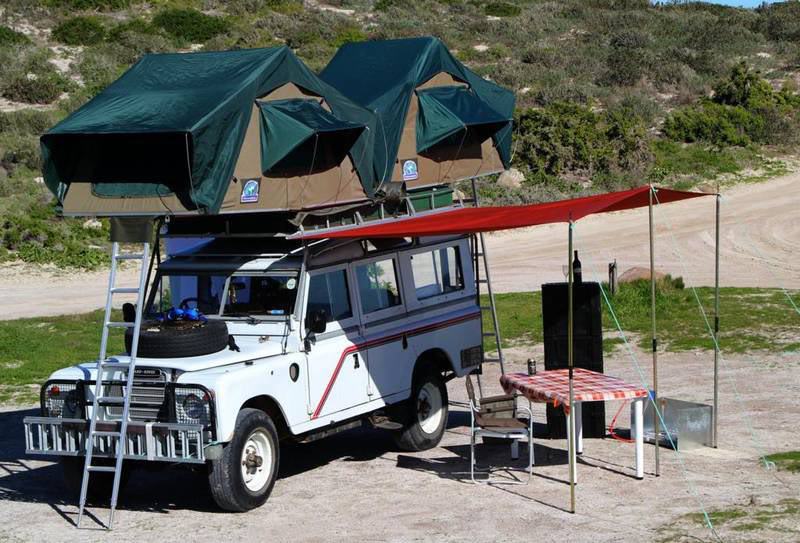
There are many creative options for extending the usefulness of your vehicle to keep you comfortable away from home.
What’s in there?
- Strawberry Fields Cream of Wheat — 64 Servings
- Maple Grove Oatmeal — 112 Servings
- Uncle Frank’s Italian Lasagna — 16 Servings
- Granny’s Homestyle Potato Soup — 48 Servings
- Traveler’s Stew — 48 Servings
- Summer’s Best Corn Chowder — 16 Servings
- Blue Ribbon Creamy Chicken Rice — 48 Servings
- Liberty Bell Potato Cheddar Soup — 40 Servings
- Traditional Fettuccine Alfredo — 40 Servings
- Independence Hall Chicken Noodle Soup — 16 Servings
- Cheesy Broccoli & Rice Soup — 32 Servings
- Country Cottage Mac & Cheese — 32 Servings
- Heartland’s Best Mashed Potatoes — 64 Servings
- Creamy Stroganoff — 32 Servings
- Instant White Rice — 40 Servings
- Chocolate Pudding — 60 Servings
- Honey Coated Banana Chips — 32 Servings
- Orange Energy Drink Mix — 32 Servings
- Settler’s Whey Powdered Milk — 48 Servings
- Coffee & Filters – Plenty…
This food is stored in a cool dry place in the Plano trunk so it’s ready to go. This should last a family of 4 approximately, 30 days. There are lots of freeze dried vendors out there. I suggest you do some research and then watch for sales. You can save a lot of money sometimes and it is always cheaper to buy in bulk. Your personal case might need to be adjusted for special diets, but this is an example.
Case 2 – Shelter
This case should be pretty simple to explain. It’s just the big gear we will use to keep us out of the elements.
- Tent – 6-man tent
- Tent stakes
- 3 tarps – One for our ground cover. The others can meet various other needs.
- Coleman Lantern and spare fuel
- Camping Axe
- Sleeping bags/pads
Case 3 – Supplies & Extras
Cooking
- Coleman Stove
- Propane
- Camp Bowls
- Silverware Sets
- Cutting Board
- Bottle/Can Opener
- Aluminum Foil
- Cooking utensils
- GSI Pinnacle Camper Kit
- Platypus Gravityworks Water Filter
- Extra Knives
Cleanup/Hygiene
- Trash Bags
- Wet Ones
- Camp Shower
- Paper Towels
Health
- Bug Spray
- First Aid Kit
Miscellaneous
- Fire Bag – Flint, tinder, wetfire, lighter
- Toilet Paper -Probably not enough to last 4 people 30 days, but enough to get us started.
Is that it?
That is the million-dollar question isn’t it? I know that some people will have items I have missed and I can easily come up with hundreds myself, but you have to ask if those items are necessary. Can this list keep you alive? Can you store this and get it loaded quickly? I think so and in an upcoming post, I will show you how I load everything.
There are other supplies that get packed in here too like weapons, bug out bags and communication items. I also have vehicle preps and clothes so stay tuned for more.
In the face of disaster, preppers know we need to move quickly. We should be prepared to act in a minute’s notice when we realize our family is in jeopardy.
History Lessons On Staying Warm in Winter
Humanity has survived in some pretty frigid extremes, even before the advent of our sleek ski suits and long underwear. Even so, it doesn’t take all that much cold to start affecting our moods, physical capabilities, and eventually making us sick or endangering our lives. Whether bedding down in a sturdy home, on the move, or making a temporary camp for the snowy season, there are a lot of lessons we can take from history to keep us safer and more comfortable.
Tipi & Longhouse Fires
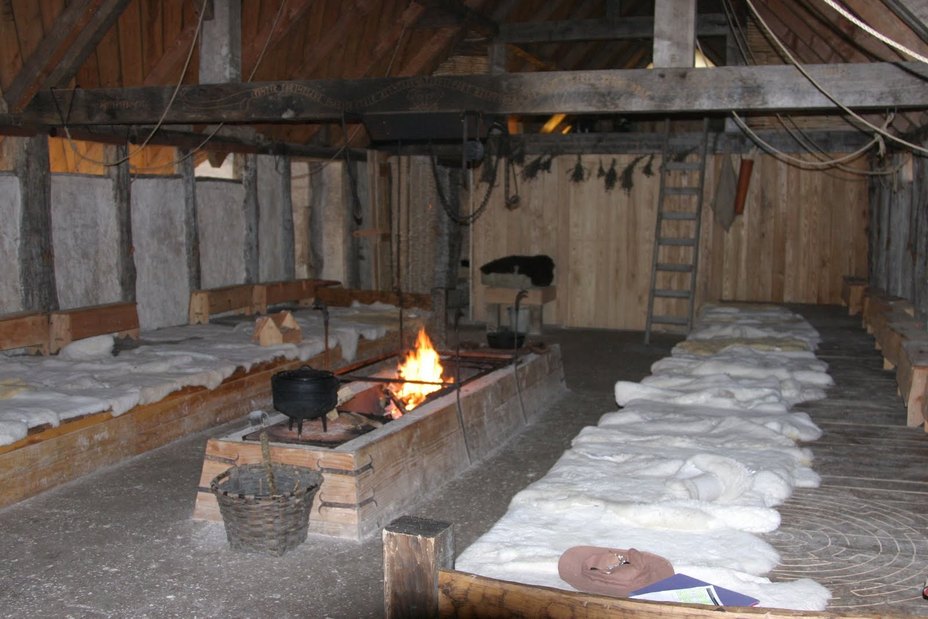
From the Vikings who dealt with some pretty gnarly conditions to the Native Americans on the East Coast, longhouses have been common throughout history. The general types share a few common traits. There’s a fire pit in the center, or several dotted in between, with sleeping or seating areas down the sides. The construction differs somewhat, with Vikings going for very solid, deep, permanent longhouses and only turning to higher floors and loftier ceilings later in history.
The First Nations and Native tribes who built winter longhouses typically built them with higher ceilings, which served the dual purpose of increasing space for storage and drying winter fish and game as well as allowing smoke to rise higher and out of faces. The higher ceilings also allowed them to vent smoke without as many drafts making it the floor.
The migratory Indians of the plains also turned to height to allow smoke to rise – yes, the large tipis of the Sioux and Lakota had fires inside them.
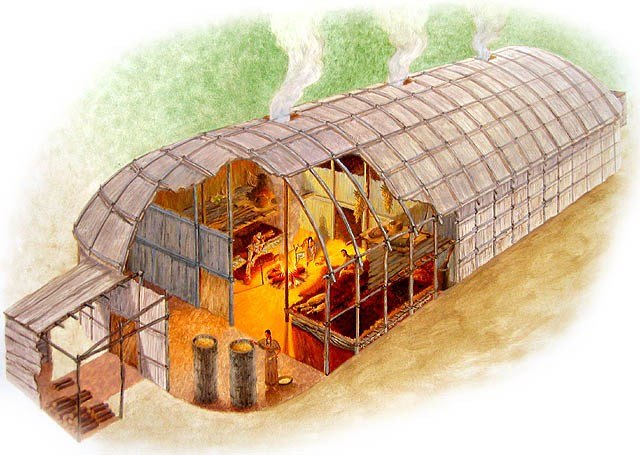
Tipis of original construction were seriously tall, and built with flaps that could be opened and closed near the tops. Natives could control openings to allow for ventilation but minimize drafts reaching the ground level. It took only a small fire to warm the conical space, with the shape helping to minimize rising heat loss. The shape also helped with resilience to the harsh winds of the Great Plains, and to shed snow and icy build-up when in winter camps.
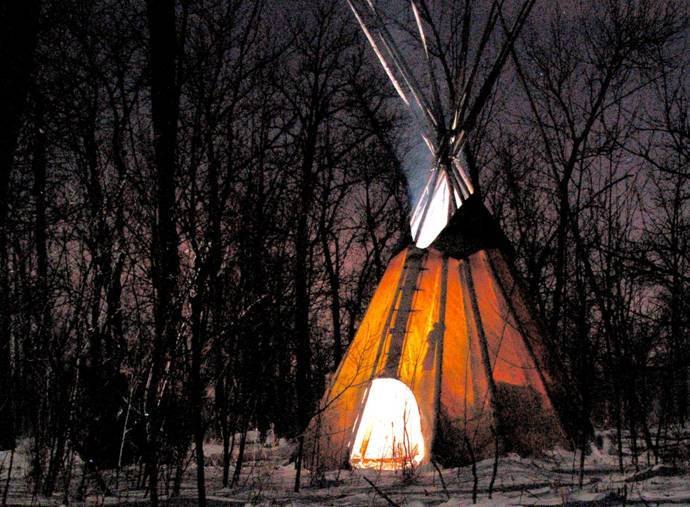
We might not be able to build permanent homes to take advantage of every aspect of history, but we can apply some of the same facets, especially remembering that we need ventilation space – but it doesn’t have to be empty, wasted space. We will likely construct smaller shelters on the move, especially if we’re by ourselves, but the benefits of lessened heat loss, small space to warm, and buffering and withstanding winds and heavy snow or ice can make both a tipi shaped shelter or a geodome shape a good one to be familiar with.
Switch Sheets
Those Vikings and natives in their longhouses had another trick up their sleeve, just like everyone else in cold climates, ancient Samurai to modern Mongols: furs. When winter chilled bones, bedding was switched out so folks piled into thick, dense furs.

We might not be big into furs now, but we can still apply that. One, it was dense furs below as well as above. Throwing a comforter or blanket down over a mattress or the bottom sheet can be a fine way to buy a few degrees of warmth in winter. Likewise, instead of a sheet near the body, even a flannel sheet, the next time toes are cold, think about remaking the bed with a fuzzy flannel or fleece blanket between you and the quilt or comforter instead. Sheets are far easier and faster to wash and dry, but when it’s a difference of trying to sleep through tensed muscles or huddled together instead of stretching out and relaxing in comfort, it just might be worth it.
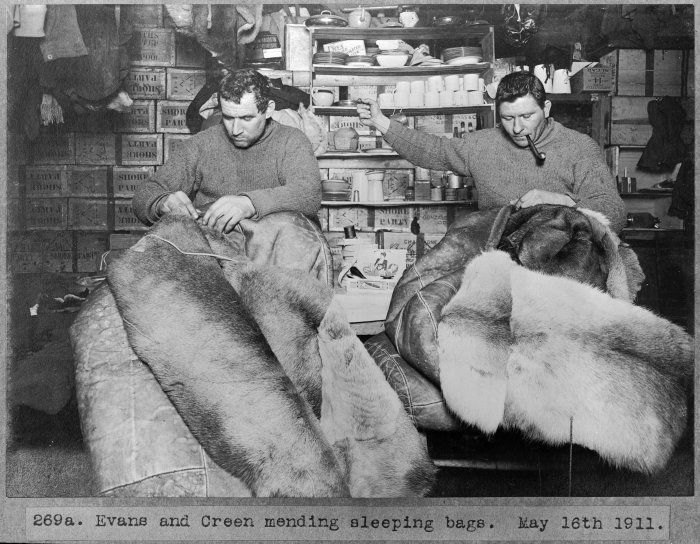
Backpacking in cool weather, I regularly carried a lightweight but fuzzy flannel blanket to line my bags with instead of my usual sheet. Even though my bags would have done the job, most likely and almost anywhere, the blanket also had a warm-and-fuzzy morale boost.
Caves & Construction
If we do have a chance to build from scratch, we might take note of the number of ancient and more modern folks who have survived winters by bunking down into caves. Deep places in the earth hold a more constant temperature. It may not be warm – an advantage in summer – but insulation can definitely be an aid over the lightweight and thin stick construction of today or single-layer bricks.
Erecting wraparound porches with or without screens, pulling drywall to pack in insulation, planting evergreen shrubs, or attaching greenhouses can all be ways to increase the “thickness” of our construction and help regulate the temperature inside our home.
Tapestries

Stone is not without its faults, even thick stone. Tapestries were originally conceived in the Middle Ages for a far different purpose than movable art. Originally, they weren’t ornate at all. In some cases they were plain straw mats or even animal skins. Humble or elaborate, they helped buffer residents from the cold and damp that seeped around stone and earthen walls.
We don’t have to have stone to benefit from the same. If we’re in a serious disaster, buffering our walls with blankets, quilts and comforters can provide us with the same insulated benefits. Especially if we have modern construction of planks, OSB, siding, and drywall, we might be served very well to invest in tarps and nails to line walls, and hunt up free and low-cost bedding and tablecloths at thrift stores, yard sales, and freebie websites.
Rushes for Floors
Another form of insulating used in early times on both sides of the Atlantic were rushes or straw laid across floors. Historians may have gotten it wrong though, and beyond the very earliest days, those rushes may have been woven into mats instead of strewn loose.
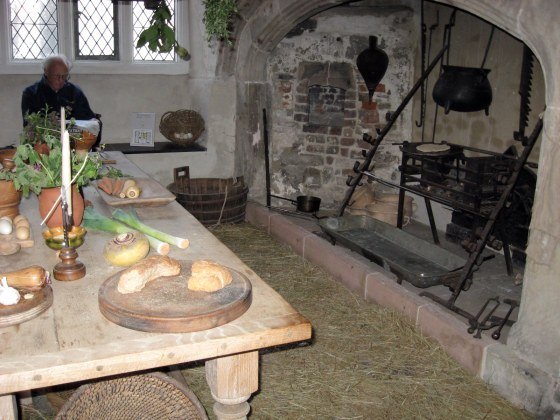
If you bring a bunch of dry grass into my house, I may have to hurt you. However, we can gain the same benefits layering carpets and rugs and runners.
I lived in an old farmhouse with such cold floorboards, my mother actually used to throw a quilt under a rug at the dining room table, and cover the living room floor in a comforter to get the dog beds and feet a little higher off the floor. She used another comforter or several sets of rugs under our beds, giving them just a few degrees of insulation from the cold boards – a few degrees that made a big difference.
It doesn’t have to cost a fortune – we grew up pretty poor. She made the comforters herself out of thick padding and a couple of durable pieces of fabric, sometimes old curtains from hotels, and picked up carpeting from installation companies to clean, cut to size, edge and use as rugs. Like our ancestors before us, she saved clothing and scraps, and turned them into patchwork quilts – some lovely and intricate, but most just simple squares patched together.
Canopy Beds

In the olden days, the lucky and wealthy had canopy beds that helped tremendously in cold winter nights. It’s like an igloo or tipi: The curtains and the top create a smaller space to warm up, and it’s easier to keep warm. They also cut warmth-stealing drafts from the room, and help keep heat from rising all the way to the ceiling.
We can replicate aspects of the canopy bed in a lot of ways. My father really did once pitch tents atop beds during a long, severe blizzard. For a short-term disaster, we might have low enough beds and tall enough chairs to create a small space similar to a snow cave.
For a larger personal or widespread disaster, we can prepare with four, eight, or twelve poles from unwanted bamboo stands or swing sets, or pick up some lumber. Shower rods and curtain rods, more bamboo from a roadside, and tarps, freebie curtains, layers of free or cheap sheets, and we’re in business.
Stoves vs. Fireplaces
Benjamin Franklin revolutionized more than we may know. He’s responsible for the switch from fireplaces to home-heating cast iron stoves. Fireplaces tend to be drafty and require larger chimneys – chimneys not conducive to moving or taking apart for cleaning. The cast iron stove eliminates some of the cold air drafts drawn in by the fire and chimney. It also creates a huge heat sink that more effectively radiates warmth into and throughout a room.
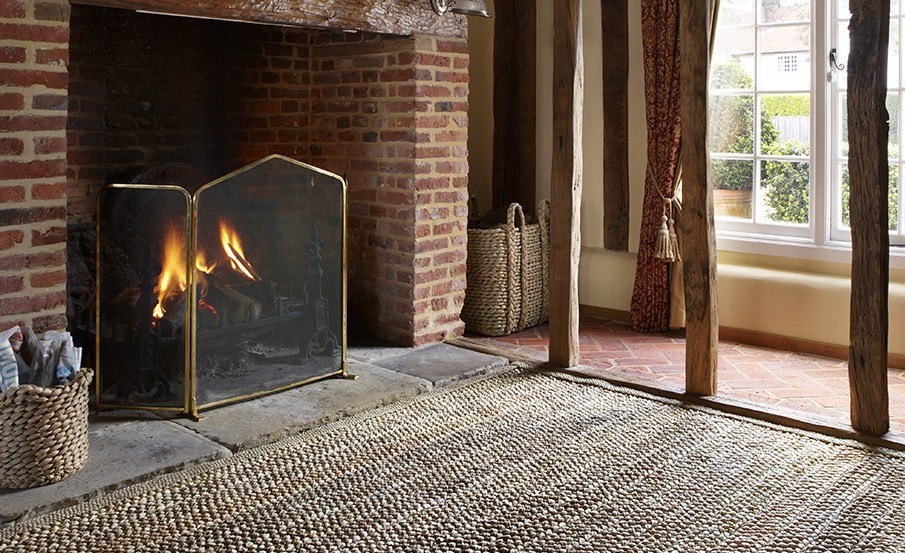
We can replicate some of the advantages with metal grating in front of fireplaces, and fire bricks and stone that will hold and radiate heat. We can add metal pots of water in front of a fire or on a stove to increase heat retention and radiation. We can also add actual radiators to our chimneys, increasing the warmed surface areas that can in turn help warm and heat our homes.
Hoods & Caps
There are all kinds of funny hats in history, and they worked. The folks who wore – and wear – knit caps that come over the ears and big square bonnet-like hoods stayed warmer, in bed and out in the chilly world. If we anticipate a long-term or personal disaster in winter, some sleep caps and fur-lined or wool-lined hoods we can wear with anything are a very good idea.
Chamber Pots
While the wealthy eventually used them exclusively, the poorest and earliest users turned to chamber pots overnight to eliminate the need to expose themselves to the most severe cold hours, or the hassle of getting geared up to hit an outhouse or latrine. Honeypots are still a winter staple for some First Nations and Alaskan camps, where plumbing and outhouses freeze solid. In addition to the usefulness in winter, something to stand in for chamber pots (or bedpans) are worth the investment in case of illnesses.
Furry Friends

It’s not really a joke. Body heat is a wonderful thing, and nothing pumps it off like a cat. History and the modern world are full of anecdotes about cats and dogs being lap warmers, and being allowed in to share beds – especially with children in the pre-HVAC eras. Children were also packed into beds in winter to share warmth, both to be able to layer more blankets in a single space and because of the shared body heat. Explorers and hikers have spooned to survive in countless situations.
Modern Tricks for Staying Warm
Windshield reflectors (or Mylar blankets) – Place them under beds, sheets, or bedrolls, or behind you and behind a campfire to reflect heat back towards the body.
Create a smaller space – Divide rooms with curtains or panels, or hang curtains to close off entryways and large openings where there are no doors. It creates a smaller space to warm. Remember that heat rises, so as with a proper canopy bed, closing off the top is important.
Switch Curtains – While we’re collecting goodies for hanging, we can also collect darker, heavier fabrics to switch for the lightweight, pale summer curtains in our windows. They’ll help absorb and hold heat during the dull gray days.
Flip Fans – Ceiling fans help in summer by drawing heat up and creating a breeze. In winter, changing the rotation or in some cases flipping the blades can help push rising heat back down. It can save a few degrees on the thermostat, and the electricity or wood for heating the house or room those few degrees.
Stay Dry – Forget “wool is warmer when wet”. “Warmer” is a relative term. Wet wool will give you hypothermia, blisters, and chilled footsies just the same as leather, cotton, linen or hemp. It might buy you minutes or a few degrees, and that can matter, but don’t rely on it. If you get wet or sweaty, change; plain and simple. Avoid getting wet by investing in trash bags, overboots/Mickey boots, Mucs or Bogs or similar field boots, gaiters, ponchos and rain pants.
Snug As A Bug
History is full of lessons we can apply at home and afield, now and later, whether we’re trying to cut heating costs (or labor) or trying to survive and thrive in a disaster. Most require at least a little planning and forethought, although many can be accomplished with free and low-cost salvage.
The older we are and the more we abuse our bodies, especially, the more we will feel the pains and discomfort of cold weather. It can wind up costing us our edge from poor sleep, or affect our ability to complete even simple indoor tasks from cramped fingers.
Remember, it doesn’t have to be sub-zero to be uncomfortable, or for hypothermia to take effect. Start with the body and warm the smallest area necessary in a survival or disaster situation. With a little preparation, we can take advantage of all our forbearers’ experience to stay roasty-toasty, this winter and regardless of what the future brings.
Other self-sufficiency and preparedness solutions recommended for you:
The vital self-sufficiency lessons our great grand-fathers left us
Knowledge to survive any medical crisis situation
Liberal’s hidden agenda: more than just your guns
Build yourself the only unlimited water source you’ll ever need
4 Important Forgotten Skills used by our Ancestors that can help you in any crisis
Humanity has survived in some pretty frigid extremes, even before the advent of our sleek ski suits and long underwear. Even so, it doesn’t take all that much cold to
Finding the Best Property for Preppers
For preppers, a home’s location is of utmost importance. Your home is your headquarters, your castle and sanctuary. It’s the one place you hope to feel in control when chaos breaks out.
Serious preppers are beginning to invest in purpose-built retreats that are off the grid and away from the fray. But make no mistakes about it. These retreats aren’t about relaxation and taking in a scenic view. The sole intent is to have a place that is made to stand on its own if humanity were to falter. In this article we will highlight 7 factors to consider if you are looking for the best property for preppers.
Determining Access to your property
Professional movers like North American have helped thousands of people move to urban areas and remote locations. One important piece of advice they give to preppers looking for a remote retreat is to always consider access. How will you and others access your retreat location?
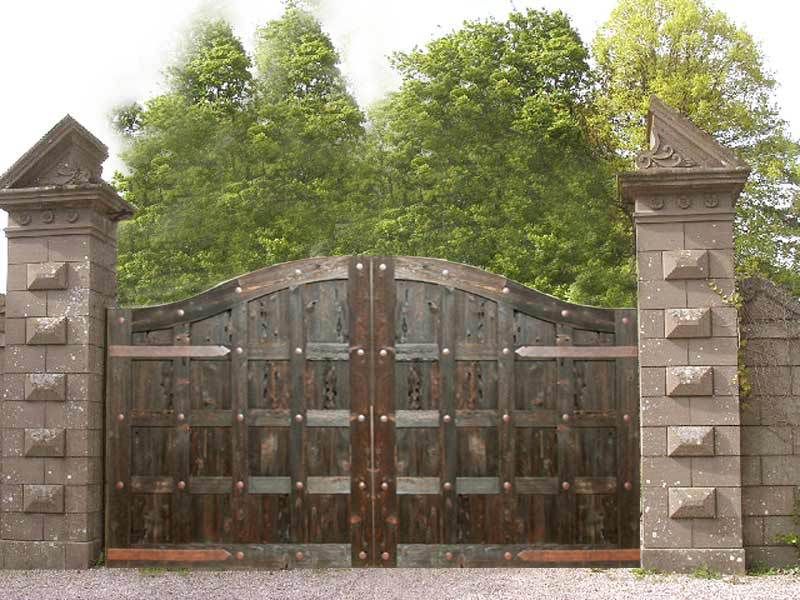
Thinking about how you will control access to your retreat property is an important consideration.
For most people, it’s fairly easy to get vehicles and moving trucks to a new home. Preppers that live in non-traditional areas like a hillside may need to work out additional logistics to get a home setup or built. This can actually be a benefit since it will also be difficult for others to get on the property. However, be prepared to construct your own roads if you’re looking for raw land to build on. This could have major consequences on price.
If a property is heavily wooded there could be hidden access points. It’s important to walk the entire perimeter of the property looking for entry points and notating where fencing or barbwire will be needed to block access.
Must have sustainable Water Supply
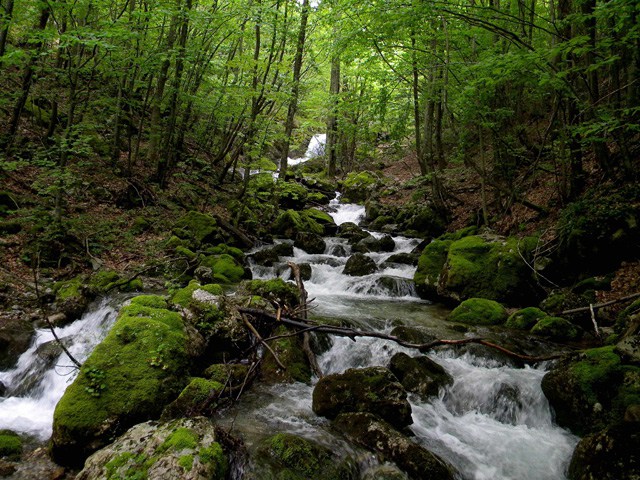
A sustainable and abundant source of water is a must.
Having a ready supply of clean water is the biggest priority during natural disasters, riots, war and every other emergency situation. Preppers understand that they need to have a long-term solution that goes beyond storing gallons of bottled water.
It may be difficult to find a piece of property along a stream, river or lake that isn’t already in a developed area. Flooding is also a concern in these locations. The better option is to have a well. Currently, about 15% of Americans have private water sources. However, you will want to check the local health department for information on water regulations and testing guidelines in the immediate area.
What are the Security Issues of your property?
Securing your property is necessary for protecting your people and supplies. Many preppers look for property that’s already fenced off with access controlled by a security gate. If the property has no perimeter barrier that will need to be factored in before deciding on an asking price. It’s also important to bear in mind that vegetation is no substitute for fencing. It can slow people and animals down, but it won’t keep them out.
Do you have adequate Storage for your supplies
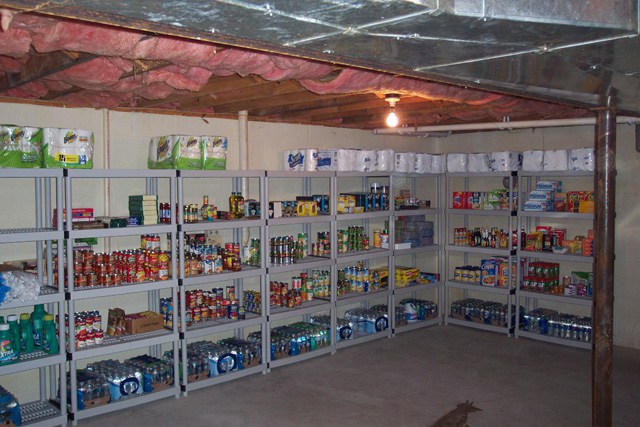
Tiny Homes are catching on, but they don’t have anywhere near the amount of storage you would need for your prepper property.
From food containers to firearms, preppers know the importance of stocking up on supplies. The problem is you need a place to store everything so your supplies aren’t compromised. Many prepper real estate consultants suggest that people consider properties with at least five acres in order to have enough space of living, farming and storage.
How you store food could have serious implications on survival, strength, health and morale. Properties that already have a storage shed or barn that can be secured will put you ahead of the curve. Dark, underground cellars offer good storage for canned goods, but you may need a climate-controlled space with low moisture levels for wheat, grains, legumes and fresh produce storage.
What is your Off the Grid Power Supply?
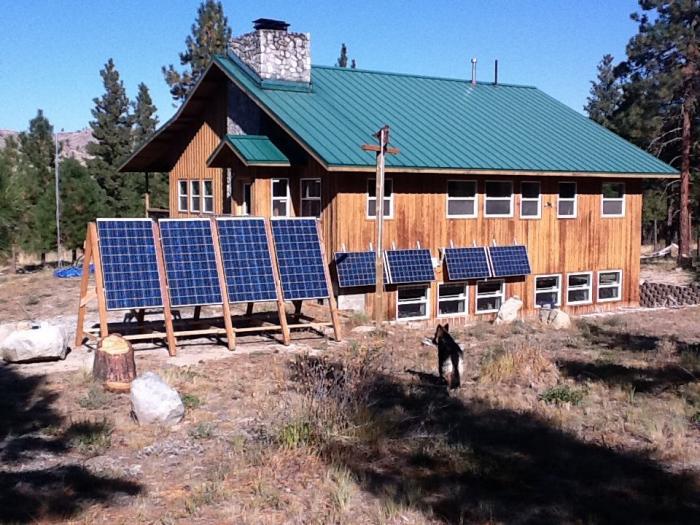
Mounting Solar panels on roofs or moveable frames allow for easy access for maintenance.
During a worst case scenario, the power grid will likely go down. People that have prepared in advance by putting together an independent power supply will have all of the modern day conveniences, including security systems and device chargers.
Homes that have already been outfitted with solar panels, wind turbines, thermal heating and gas-powered generators are essentially move-in ready. If power supplies aren’t in place you’ll have to assess the area to gauge its wind and solar power potential. Ideally, you’ll want a variety of power sources and ample power storage for times when the wind and sun aren’t in abundance.
Soil Conditions for crops
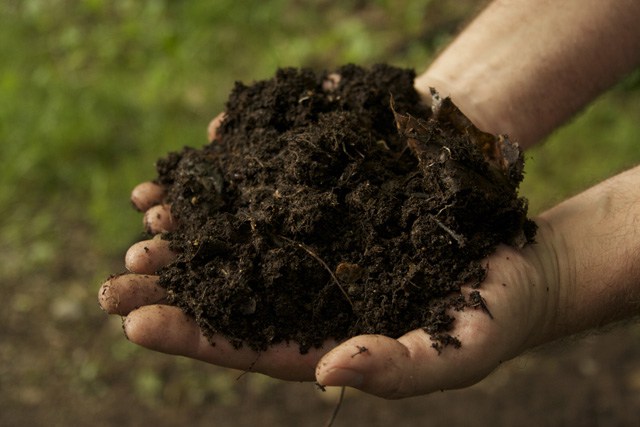
The soil quality will be a major factor in your ability to raise your own food.
Like water, food is a necessity for sustaining life. You can go much longer without food (at least three weeks), but the fact remains that your rations won’t last forever. Eventually, your stock of food supplies will be depleted, and you’ll have to rely solely off the land.
Many people overlook the health of the soil on a property even though finding a spot that can support crop growth and has good drainage is critical. If the property already has fruit trees or a garden that’s a very good sign. Remember, your store bought food supply will only last so long. You have to stock up on seeds and consider how your land can produce sustenance.
Bonus – Underground Bunker
The ultimate property feature for preppers is an underground bunker. In the event there is a nuclear bombing or biological warfare a bunker is a last resort for surviving the fallout. Bunkers can be standalone structures or connected into the power grid. When connecting electrical and plumbing sources it’s important to ensure all the spaces around conduits and PVC pipes are thoroughly sealed with silicon caulking.
For preppers, a home’s location is of utmost importance. Your home is your headquarters, your castle and sanctuary. It’s the one place you hope to feel in control when chaos
Prepping on a Budget
One excuse that some people use for not beginning to prepare for disasters is the cost. They look at shows like Doomsday Preppers or view the advertisements on prepping or survival blogs and start mentally calculating the costs of everything they need in their head. When you look at Prepping or being prepared as a destination it is easy to see why this thought looms in the minds of people everywhere.
It doesn’t have to be that way.
I have said it many times before that Prepping is a lifestyle. Prepping is never something you can finish and for most of us we will never be as prepared as we like, but by taking slow, steady steps towards your goals you will be more prepared today than you were the last month. When you look back years from now you might be amazed at what you were able to accomplish.
Now after saying all of that, I will readily admit that prepping in many areas involves some financial commitment. The trick is to acquire prepping supplies as your financial resources allow, don’t break the bank, but save money at every opportunity. Today I wanted to share a couple of ideas I have used personally to save money. When you are prepping on a budget, you want to put a good bit more thought and research into purchases but this should save you some money in the long run.
Determine what you need to spend more money on
There are some items that basically do the same thing, but depending on who makes the item, the cost could be dramatically different. You could purchase an Audi or you could purchase a Ford. They will both do the job of getting you where you want to go in relative comfort, safety and dependability, but one car could be twice as much as another. Yes, the Audi might have different amenities, aesthetics and niceties. It is probably engineered better and will overall be a better investment, but you chose to spend more for one.
It is similar in some respects to many of the items we look at as necessary for prepping. We know we need a certain item and begin shopping, reading reviews or scouring the comments on prepping blogs for the perfect item. Many times this will lead you to an item that while very good, is not significantly better at doing the job you will require of it to warrant spending twice as much. Knives are perfect examples of this concept and firearms usually get into this territory as well.
Before anyone gets on to me, I firmly believe in the concept of you get what you pay for. I don’t advocate buying the cheapest thing you can find in all circumstances but sometimes, you just don’t need to buy the Audi when the Ford will be perfectly fine. Consumables are where I first looking at cutting cost. Disposable paper products, lighters, matches and toilet paper are easy targets. Dollar stores are great for some items but not everything. Yard sales are excellent bargains too if you have the discipline and can find the right deals. I have a friend who has some special power for finding ridiculous deals like a crossbow in a case with arrows for $50. About all I can find is books.
Something like a knife involves a little more research, but you can easily compare products on sites like Amazon.com. Should you spend $155 for a Cold Steel Espada with polished G10 handle knife or would something closer to the $24 Gerber Warrant Knife do just as well for saving your butt in a survival scenario? I know there is a case to be made for spending money on collectables or what you “must have” because it makes your soul smile, but we are talking about saving money here.
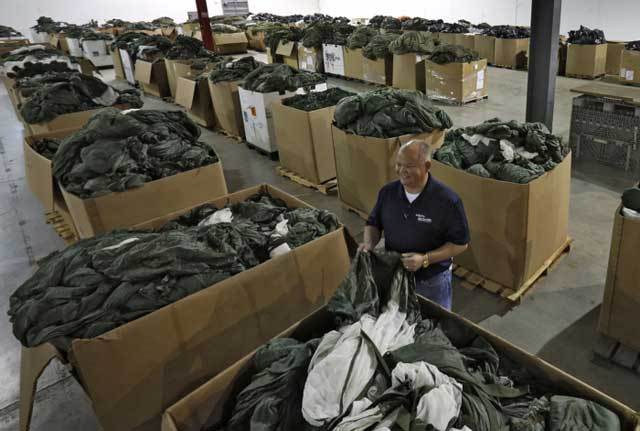
Military Surplus stores can be a good source of deals on some of your prepping supplies.
Purchase used items
Another good way to count pennies if you are prepping on a budget is to buy gently used items. Not every piece of prepping gear you get needs to be brand new for it to be perfectly suited to what you need and this almost always will cost you less than full price. One place to get some items used would be Ebay, military surplus stores and Craigslist. I wouldn’t get underwear or anything like that, but I have purchased used military sleeping bag systems and saved hundreds of dollars. You can shop for backpacks and other camping gear in the off-season (right now) that people are looking to get rid of because they got new equipment for Christmas.
Firearms are usually just as good when they are used as brand new, but you likely won’t save too much money going this route because firearms don’t typically lose their value. You could save$50 to $100 though if you shop around. Pawn shops and gun shows are two great places to legally purchase used firearms and save some money.
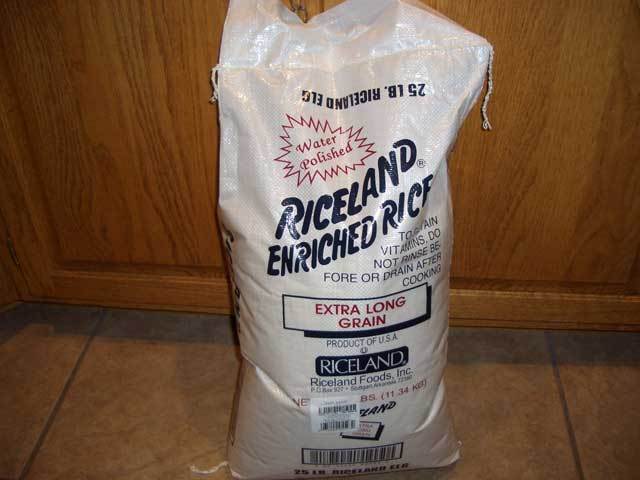
Buying rice in bulk is a huge cost savings.
Buy in bulk
Food is one of the first things that preppers stock up on and it makes sense because we all need food, pretty much every day but you can save money by purchasing in bulk. There are a few good candidates for this method, but Rice, Beans and Whole Wheat come to mind. Instead of buying the small bags of rice, you can buy a 50 pound bag of rice for about $20. This one bag provides 504 servings of rice. To keep it fresh, you can store it in sealed Mylar bags. You can also bulk purchase Salt, #10 cans of fruit and veggies and toilet paper if you have a Sam’s or Costco membership.
Another thing to buy in bulk is ammo because you can usually get a better rate if you purchase 1000 or 500 rounds at a time as opposed to a single box of 50. Freeze dried food in bulk supplies of 3 or 6 months will save you money and cut down on the number of trips the UPS man has to make to your door. Yes, these purchases cost more out of pocket, but it could actually save you money to wait until you have the funds for that bulk purchase. Naturally this assumes you have some supply at your disposal while you are saving.
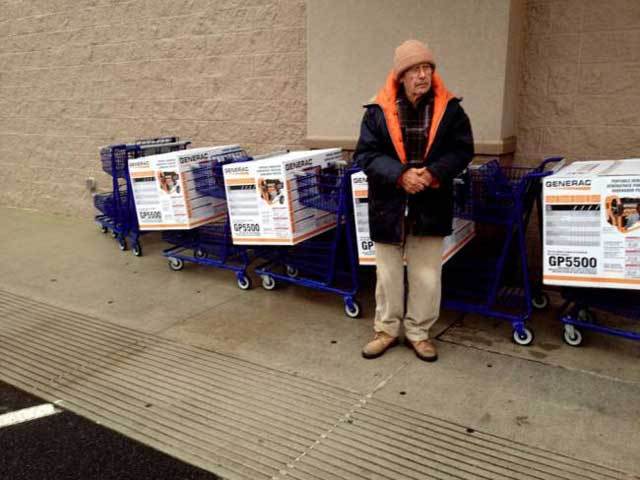
Don’t buy during a panic
Do you know when the absolute worst time to buy a generator is? Immediately after a disaster. I have heard stories of the cost of generators doubling after a flood, tornado or other crisis and that is simply because the demand goes through the roof. Resist the urge to buy anything prepping related like this in the aftermath of a disaster unless it is absolutely necessary.
A good strategy is to wait until everyone who bought these generators are selling them 6 months down the road because they don’t believe they will ever need them again. Along with items like generators, food supplies are lower during a disaster as well. You don’t want to be running to the store when everyone else is.
One good thing you can do is to create a list of all the prepping supplies you think you need and prioritize the items in that list. Once you have them in priority order, you can be more selective about what you purchase and when. Take some time to shop around. The internet is a great tool for comparison shopping and you can easily see who has the lowest prices on items. With a little forethought you can strategically make purchases and save money.
What ideas do you have for prepping on a budget?
One excuse that some people use for not beginning to prepare for disasters is the cost. They look at shows like Doomsday Preppers or view the advertisements on prepping or
The Coming Correction
In the millennia mankind has existed we have witnessed some small corrections. Nature, the things by which we are all bound, sets in motion events, unforeseen and undeniable. In an age where science strives to understand and alter mankind, I see efforts in a multitude of misdirection’s.
What nature provides us, science does so artificially. These efforts, while noble and well-meaning fall short of nature’s millions of years of experimentation finding what does and does not work. Mankind is nothing more than the product of that grand experiment. I will hear all the arguments that it is God who created mankind. Does it say God also created nature? Why should God create something if he had no intention of using it? So comes the corrections.
To mankind it means the extinction of blood lines that have become weak and corrupt. Many have learned of the plague that came abruptly to kill the multitude. A tragic event but it left mankind stronger. Other events that destroyed entire civilizations by the fact they looked to God for help and should instead have looked to themselves and adapt for survival. Now we are faced yet again the correction that will destroy mankind or make us stronger. We hear of future events of volcanoes, and asteroid’s, and even another sun with its planets that is coming. If there is truth among these events I haven’t found it.
The truth I do know comes from the threat of government. This is something that mankind has created but failed to control. Mankind doesn’t like violent change. We will tolerate much and will be pushed to the extreme before some, the ones with ability to lead react. They incite others to follow. We have seen the evidence within our history. How accurate that history is debatable but it divides the followers into the divisions of their particular mindset.

We have the Christian, Budist, Muslim, with leaders that profess radically different physiologic mindsets. All professing to know and teach their own difference between what is good or evil. This is not the focus of my writing. Each has given their section of mankind the abilities to adapt. This is the crux of my point, adapt to what?
Man will be it seems from the predictions called upon to adapt. If we believe the many predictions, it will be a natural event that will put man’s talents to survive to the test. In the end it will be the strongest and most versatile that will survive. Survival, the very thing that many prepare. Which do we prepare for? If I had that answer, I would indeed be a rich man. While most wait for the answer, the event springs itself upon us. Now it is assured that the multitude, unprepared will dash off directionless and leaderless. They are destined for extinction. They will assemble into gangs with a leader that has only force to insure safety and will revert to a society of the Stone Age level that consumes to survive. The probabilities that this level of survival could last depends on the food to be consumed. Many of “the followers” will gather behind these leaders for security. Does this sound like our government? They turn a blind eye to the atrocities that leadership and power bring. This multitude will survive moving from place to place using the resources until it comes upon the community that it can’t overcome and will choose to combine to survive or die.
I continue now about the correction event, not knowing what it may be or if we can oppose its force and survive. Survival being the goal we as individuals must decide what is best for each of us. The multitude must continue to make their living and support families. We must also think ahead and plan on a direction we must take in the event we are separated from our families and what we must do when we are back together.
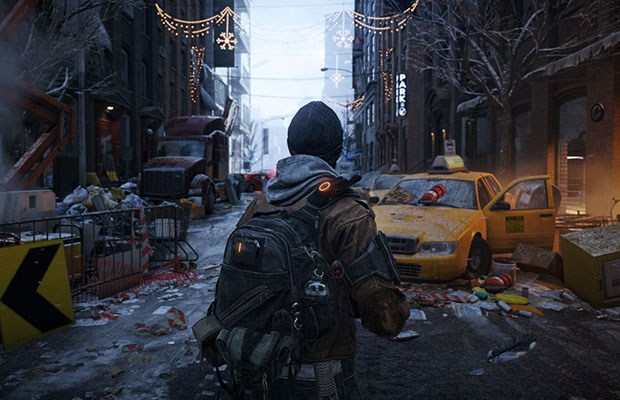
With the multitude of websites showing us what we need or have to survive. They range from the pocket tin that is guaranteed to have everything one needs to survive. To the backpack so large that will draw notice of others and tell them you have what they need. I can say that I wouldn’t want to draw attention to myself. The description I do like is the grey man. The ability to blend and be the shadow. Sounds like a good idea for the crime fighter TV program.
When we address the problem everything and everyone must be considered an enemy. Even people you work with will in desperation act for their own survival. The people who are in a state of panic will be capable of anything. The ninety pound woman has been documented lifting a two ton car off her child. Panic and adrenaline can exhibit superhuman strength to a man or woman. You do not want to be the focus of that force. Sadly the strength is fleeting and needs an extreme event to activate. We cannot depend upon this so the rest must depend on our brain.
The brain is the best tool we have for survival. Teaching it to make the correct decisions by evaluating the conditions of the moment and projecting into the future. The future is the goal we want to get to. To be clear it will be yourself against everything else.
To get where you want to be you must have direction. Without direction you have no hope to survive not only hardship but the corrections nature imposes to cleanse its mistakes. What form will they take? Nature is creative and to survive it we adapt. Any living thing plant, animal, or microbe if it can’t adapt is extinct. With the many predictions that could come from nature or man the object still remains the same. Survival of yourself and family. World events at the moment seem to outweigh nature. It would seem the target will be the grid. If this is so then despite what plans we make they will be only temporary at best. The hordes the zombie flicks entrap our imagination with will show up. The difference they won’t be slow unthinking creatures. They will be armed and hungry and will take what you have. The only hope is to remain unnoticed until the majority have passed on looking for food. The odds of going unnoticed? Slim to none. If we have an attack like this its purpose won’t be to defeat America but destroy it. Any country wanting the resources wouldn’t destroy them. Leaving America intact would call for biological methods. Eliminate the people leaving its resources intact. Could we survive this?
Some will as has been proven with the plagues. Some will be immune to whatever is put out. The final question is how to prepare? Knowledge and as many skills as one can learn to use without power. It won’t be how much gold you have that will keep you alive but how valuable you will be in a community. Knowledge weighs nothing and the ability to adapt. The things that every animal alive must have to survive.
In the millennia mankind has existed we have witnessed some small corrections. Nature, the things by which we are all bound, sets in motion events, unforeseen and undeniable. In an
How to Remain Anonymous Online
Google is watching you. No matter which way you look at it, Google has a hand in what you search for, comment on, watch, download, share or publish. Every time you search for a location or use Google maps as a Sat-Nav that information is stored. If you type in the latest bestselling book, blockbuster movie or front-page celebrity, those searches are also saved. Websites send small packets of data known as Cookies, to help them remember your choices or personal information for the next time you visit. These Cookies help build an online profile which allows that creepy banner advert for the product you have just been looking at to pop up on a completely unrelated website, or your details to be remembered the next time you pay a visit your favorite online retailer. It’s like that odd shop assistant who always remembers who you are and what you want.
This detailed information is of course interesting to governments, law enforcement agencies and marketers, providing a very detailed map of a person’s movements, habits and preferences. Despite this unprecedented level of data collection and surveillance, there are ways to avoid being tracked and remain anonymous online.
It has never been so easy to track someone. Pretty much every person over the age of 5 has a small electronic device in their pocket that is constantly transmitting signals and revealing its location. Users even make tracking easier by searching for a nearby restaurant or asking Siri where the cheapest dog food can be found, giving away information on where we are going and why we are going there. All of this stored information can be accessed; Google Timeline provides a very spooky map of everywhere you’ve been since you created a Google account. Google also creates a nice history of every website you have searched for or visited. Yes, there’s the locally stored history everybody knows about and deletes after they’ve visited a website they’d prefer other computer users not to know about, but there’s also a more complex Google search history linked to your account. This can be accessed and cleared, unless you want Google to know exactly what you’ve been looking at since you created your account. You can also ask Google not to save your results or track your movements via your account preferences.

Sweeping Away a Search History – Molly Wood
Emails should be a safe haven. Traditional post is still considered to be pretty secure and letters can be sent anonymously, so online mail should reflect this. But this isn’t the case. Gmail messages carry your IP address, so the location you send an email from is logged and whenever you download a message, your location is given away again. These settings can be changed, but not many people realize this location sharing is a default setting.
Even your YouTube video watching habits are being monitored, stored and acted upon. Have you ever noticed that after spending a Sunday morning watching hilarious cat fails and shark attack videos that the next time you log in, there are many other cat and shark videos on your ‘recommended’ list? Guess what – it’s not a coincidence. Fear not however, your YouTube viewing history can also be cleared and settings tweaked so that anything you watch in the future can be forgotten instantly.
When it’s time to buy Grandma’s birthday gift, make sure the connection you are buying over is secure. Look for a padlock, https: prefix or green ‘verified’ box in the address bar or alternatively, shop using a VPN (Virtual Private Network). A VPN will encrypt any data transmitted and will make it difficult for snoopers to view sensitive details such as credit card details, or even what you are buying for Grandma.

If you type in the latest bestselling book, blockbuster movie or front-page celebrity, those searches are also saved. Websites send small packets of data known as Cookies, to help them remember you choices or personal information for the next time you visit.
If you’re going for a walk and don’t want anyone to know where you’re going, enter your phone’s settings and turn of location services. This is the software setting responsible for transmitting to applications like Google Maps exactly where you are, based on your phone’s GPS signal. This allows Google to build a detailed profile of where you’ve been, where you ate and what you’ve been doing for last four hours.
There are lots of easy ways for people to find out lots of information about you. If you have several social media accounts that use the same email address, there are intelligent Chrome web add-ons such as Prophet and search techniques that will allow a complex snapshot of your life to be created. If you use the same email address for Facebook and LinkedIn for example, and you don’t have strict privacy settings on Facebook, your real name, occupation, address, favorite football team, sexual preference, age, phone number, number of children, pets and names of your family and loved ones can be collated in seconds. For identity thieves, this makes things easy. Consider using a different email address for different social media accounts and make your Facebook profile inaccessible to strangers, or limit the amount of information you put on there. Did I mention Facebook also monitors and collates your likes, where you go and what you do as well?
As technology progresses and more is done with the information we give out freely, it will only get worse for people wishing to benefit from the digital world but remain off the grid at the same time. It is virtually impossible to live an online life without giving away more personal details than necessary, but with the right precautions, you can limit the amount of data that is freely available and decrease the chances of your personal data being taken advantage of.
Google is watching you. No matter which way you look at it, Google has a hand in what you search for, comment on, watch, download, share or publish. Every time
The Prepper’s Solar Still
In this day and age, we have plumbing and faucets. We have our own water bills and water heaters. We also have our own water pipelines which connects with the cities or counties pipeline. We drink our water from our faucets. We may have water filters so that we may stay away from unwanted bacteria and particles. But what happens if an earthquake or a natural disaster occurs and it destroys the pipelines? You have no more water!!!
Well that is a problem considering the fact that we humans can only live 3 days without water! How then can you get water when your water’s pipeline is destroyed? You may begin to worry, for that is okay. However, let me put your fears behind you, for you can survive! Sure it may not be easy or even fun, but even the most urban human being can collect water without a pipeline. Nevertheless, if you have a fresh body of water nearby, you’re probably going to be okay! You just need to boil all water that you collect from the wild. Now, if you have several plastic water bottles you may survive a little longer. But all your supplies may run out! So why not be a prepper and prepare your home with the prepper’s solar still kit.
You will need:
- A bucket such as a 5 gallon bucket
- A house-hold trash bag
- A couple very small rocks
- An empty 12 oz. cup or a small empty container
- Some green vegetation such as grass or leaves
- Duct Tape or 4 feet of semi-strong string
Making your kit:
- Gather all your required supplies. You do not need any vegetation for your kit.
- Take your bucket and place all your supplies within. You can make more than one kit which is ideal for a survival situation.
- I would personally make more than one kit. I would have at least two kits in your home and one in each of your vehicles.
Making the Prepper’s Solar Still:
- Take out all the supplies in your solar still kit.
- Find some nearby vegetation. Leaves, grass, branches with leaves, or any other plants. All vegetation must be green and alive at the time of obtaining.
- Once you have all your vegetation, which should be a fair amount, you can place it in your bucket.
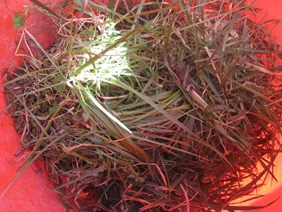
- Then place your container or 12 oz. cup in the middle of the bucket.
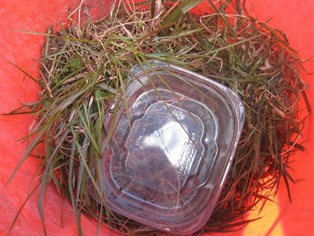
- Take your trash bag and put it over the bucket. Then use your small rocks and put it in the middle of the trash bag which will push the bag down a bit. Use the duct tape or string and wrap or tie it around the bag to keep it in place. You can rip off any extra length of the trash bag if you want.
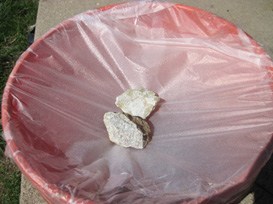
- Take your bucket outside and find a sunny spot to leave it in. If it is not a sunny day, place it in a non-shady area.
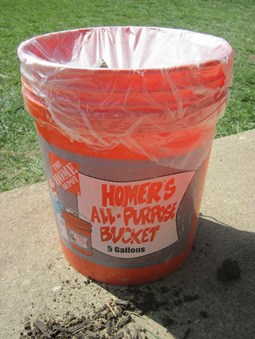
- Leave the bucket there for at least a day, if not more. If it is a sunny day it will work faster. After time, go check your bucket. Take the bag off and see if there is any water in the cup. There should be a fair amount of water. Be sure to filter and/or boil any water collect from the wild. You may want to have set more than one solar still at a time.
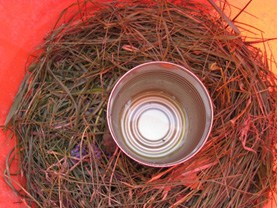
How the Prepper’s Solar Still works:
The vegetation has water within its system. Once it is plucked from the ground or a tree it dies. When you put it in the bucket and you seal it, the heat of the sun or day beats on the vegetation. Since it is inside the bucket it will get very warm, causing the water to evaporate from the plants. The water goes up unto the air and it then hits the trash bag. It then turns unto drops of water. The water begins to slide down the bag. It goes down to where the small rocks are weighing down the bag at. It then drops off the bag and falls unto the cup. The cup then begins to fill up.
In this day and age, we have plumbing and faucets. We have our own water bills and water heaters. We also have our own water pipelines which connects with the



